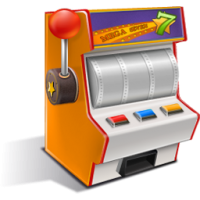Omaha poker is a poker game that is a variant of Texas Hold’em. Each player receives four personal cards, or “pocket cards”, that can only be used by that player. Five community cards are dealt face up on the table. In Omaha games, each player uses exactly three of the five community cards and exactly two of their own four pocket cards to make the best possible five-card hand, no more or no fewer. If you’d like to learn more about poker rules, scoring and more, you can visit a poker site in NZ to expand your knowledge.
Types of Omaha games
There are three variants of Omaha: Pot Limit Omaha Poker, No Limit Omaha Poker, and Fixed Limit Omaha Poker.
In Pot Limit Omaha Poker, a player can bet whatever is in the pot (i.e., $100 in a $100 pot). This is the most popular version of Omaha Poker.
In No Limit Omaha Poker, a player can bet any amount up to the value of all their chips.
In Fixed Limit Omaha Poker, there is a specific betting limit in each game and in each betting round.
Below is a general description of how to play Omaha poker. The basic rules of all variants of Omaha are the same, but the betting structure varies. Here are some more details on the various types of Omaha poker.
Basic strategies
In Pot Limit and No Limit Omaha games, the games are referred to by the size of their blinds. For example, a $1/$2 Omaha game has a small blind of $1 and a big blind of $2. Betting then continues with the player to the left of the big blind.
In Fixed Limit Omaha games, the big blind is the same as the small bet, and the small blind is typically half of the big blind, but can be larger, depending on the stakes in the game. For example, in a $2/$4 Limit game, the small blind is $1 and the big blind is $2. In a $15/$30 Limit game, the small blind is $10 and the big blind is $15.
Now each player gets four pocket cards. The betting round runs clockwise around the table starting with the player “under the gun” (straight after the big blind).
Before the flop
After seeing their pocket cards, each player now has the option to play their cards by calling or raising the big blind. Action starts to the left of the big blind, which is considered a “live” bet in this round. That player has the option to fold, call, or raise. For example, if the big blind was $2, it would cost $2 to call or at least $4 to raise. Action then continues clockwise around the table.
The betting structure depends on the type of game. Explanation of the betting structure in Limit Omaha, No Limit Omaha and Pot Limit Omaha can be found below.
Betting continues in each betting round until all active players (those who have not yet folded) have placed corresponding bets in the pot.
The Flop
After the first betting round is over, the “flop” is dealt face up on the table. The flop is the first three community cards that all active players can use. The game begins with the player to the left of the dealer. Another betting round is played. In Fixed Limit Omaha, all bets and raises are in amounts equal to the small bet (for example, $2 in a $2/$4 game).
The Turn
When players have finished betting in the flop round, the “Turn” card is shown face up in the centre of the table. The turn card is the fourth community card in Omaha. The game begins with the player to the left of the dealer. Another betting round is played. In Fixed Limit Omaha, all bets and raises on the Turn are in amounts equal to the big bet (for example, $4 in a $2/$4 game).
The River
When players have finished betting in the turn round, the “River” card is shown face up in the centre of the table. The river card is the fifth and final community card in the game of Omaha. A final round of betting begins with the active player to the left of the button.
The Showdown
If more than one player remains when the last betting round is completed, the last player to bet or raise shows their cards, unless there was no bet in the last round, resulting in the player to the left of the button showing their cards first. The player with the best five card poker hand wins the pot. Remember that in Omaha, players can only use two of their four pocket cards plus exactly three of the community cards from the table. In the case of tied hands, the pot is split equally between the players with the best hands.
After the pot has been dealt to one or more players, a new round of Omaha begins. The dealer button now moves clockwise to the next player.
Pot Limit, No Limit, Fixed Limit Omaha
The rules are the same in Fixed Limit, No Limit and Pot Limit poker games, with a few exceptions.
Pot Limit Omaha
The minimum bet in Pot Limit is the same as the size of the big blind, but a player can always bet up to the size of the pot.
A raise must be at least as much as the previous bet or raise in the same round. For example, if one player bets $5, the other must raise by at least $5, for a total bet of $10. The maximum raise is the size of the pot, defined as the total pot plus all bets on the table plus the amount the active player must first match before raising.
For example, if the pot size is $100 and there are no previous bets in a given betting round, a player can bet a maximum of $100. After the bet, the turn continues clockwise to the next player. This player can either fold, call $100, or raise an amount between the minimum ($100 more) and the maximum. The maximum bet in this case is $400 – the raiser first calls $100, bringing the pot size to $300, then raises another $300, making a total bet of $400.
In Pot Limit Omaha there is no limit, or “cap” on the number of raises allowed.
No Limit Omaha
The minimum bet in No Limit Omaha is the same as the size of the big blind, but players can bid as much more as they want, up to all their chips.
In No Limit Omaha, a raise must be at least as much as the previous bet or raise in the same round. For example, if one player bets $5, the others must raise by at least $5 (a total bet of $10). The maximum raise is the size of your stack (all your chips on the table).
In No Limit Omaha there is no cap on the number of raises allowed.
Fixed Limit Omaha
The stakes in Fixed Limit Omaha take place in predetermined, structured amounts. Before and on the flop, all bets and raises are the same amount as the big blind. On the turn and river, all bets and raises are doubled. In Limit Omaha, a maximum of four bets are allowed per player in each betting round. These consist of a bet, raise, re-raise and cap, the last raise.
How to play Omaha for free
If you want to learn how to play Omaha, there are many websites that allow you to play the game and compete online against other players for free. There are no stakes, so you can take your time to learn all the rules of Omaha.


